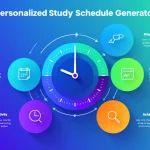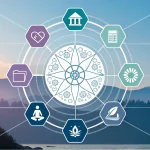Is this tool helpful?
How to Use the Career Path Alignment Tool Effectively
This tool helps you connect your skills and interests with suitable career options. To get the most accurate career guidance, follow these steps:
- Enter your skills and interests: Provide a detailed list of your abilities and passions related to your career. For example, you could write “Content creation, SEO optimization, graphic design, event coordination” or “Financial analysis, strategic planning, client relationship management.”
- Share your career aspirations: Describe your long-term professional goals. For instance, “To lead a creative team at a major advertising agency” or “To become a senior financial analyst specializing in risk management.”
- Fill in your education background (optional): Add your highest degree and field of study for better career matching. Examples include “Associate degree in Marketing Communications” or “PhD in Environmental Science.”
- Summarize your work experience (optional): Briefly outline your relevant job history. For example, “5 years as a sales coordinator, 2 years managing social media campaigns” or “3 years as a research assistant in biochemistry labs.”
- List your preferred industries (optional): Mention the sectors you are interested in working in, separated by commas. Examples: “Media, Education, Nonprofit” or “Manufacturing, Automotive, Renewable Energy.”
- Generate personalized career guidance: Click the button to receive tailored advice that aligns your background and goals with suitable career paths.
Providing clear and thorough information in each field enables the tool to offer precise recommendations that help you plan your professional growth.
What Is the Career Path Alignment Tool? Definition, Purpose, and Benefits
Definition and Purpose
The Career Path Alignment Tool is an online career resource that evaluates your skills, interests, education, and work experience. It recommends career paths that fit your unique profile and offers guidance for development and advancement.
Specifically, the tool:
- Assesses your current abilities and professional goals
- Identifies career options that align with your profile
- Suggests skill-building opportunities to improve your marketability
- Shares insights about job trends and in-demand industries
- Helps you set clear, achievable career objectives
By using this tool, you gain a clearer view of your strengths and steps for career advancement.
Key Benefits of Using This Career Alignment Tool
The tool offers many practical benefits for career planning, including:
- Personalized Career Advice: The tool matches recommendations to your specific skill set and interests, making career planning more efficient.
- Skill Gap Identification: It pinpoints skills you need to develop for your target roles, guiding your training efforts.
- Industry Trend Awareness: You learn which industries value your skills and where job demand is growing.
- Goal Setting Support: The tool helps you create clear career milestones and plans that fit your aspirations.
- Time-Saving Career Research: It streamlines career exploration by quickly suggesting tailored options.
- Confidence Building: Aligning your skills to viable job paths encourages confidence in your career decisions.
- Ongoing Professional Development: The tool encourages continuous learning to keep your skills relevant.
- Broader Career Perspectives: Discover career fields you may not have considered before.
- Organized Career Planning: Use a structured approach to evaluate and choose your next steps.
Practical Uses of the Career Path Alignment Tool
This tool supports real-world career development scenarios by guiding you through critical challenges and transitions.
Clarifying Your Career Goals
If you struggle to define clear career objectives, the tool helps by analyzing your skills and ambitions, then suggesting compatible career paths and industries.
Example:
A marketing assistant interested in digital trends might get suggestions for roles like social media strategist, content marketer, or SEO specialist, helping focus their goal-setting.
Identifying Skill Gaps for Career Growth
The tool compares your current skills against job requirements and recommends areas you should improve or certifications to pursue.
Example:
An IT support technician aiming to become a network administrator might receive advice to build proficiency in network security and earn Cisco certification.
Supporting Career Changes
For professionals shifting industries or roles, the tool highlights transferable skills and suggests steps for a smooth transition.
Example:
A customer service representative moving into human resources could discover how their communication and conflict resolution skills apply and learn about relevant HR certifications.
Staying Competitive in Your Field
The tool helps you keep pace with job market trends by highlighting emerging skills and learning resources that keep you ahead.
Example:
A data analyst receives recommendations to learn machine learning techniques and master visualization tools to enhance their competitiveness.
Expanding Your Professional Network
It suggests relevant industry groups and networking strategies tailored to your interests to help build valuable connections.
Example:
An aspiring nonprofit manager might be advised to join associations like the Nonprofit Leadership Alliance and attend sector-specific conferences.
Improving Resume and Interview Impact
Get guidance on crafting resumes and interview techniques that highlight your strengths and fit your career goals.
Example:
A software engineer may learn to emphasize project achievements and teamwork skills and prepare to discuss experience with agile methodologies during interviews.
Aligning Careers with Personal Values
The tool helps you find career paths that respect your lifestyle preferences and values like work-life balance or social impact.
Example:
If environmental sustainability matters to you, the tool might suggest roles in green technology companies or conservation organizations.
Real-World Examples of Using the Career Path Alignment Tool
1. Recent Graduate Exploring Options
Scenario: James just finished his degree in Business Analytics and isn’t sure which specific role in finance fits best.
How the tool helps:
- Analyzes James’ skills and coursework to suggest careers such as financial analyst, risk manager, or business consultant
- Provides details about entry-level roles, required skills, and industry salary ranges
- Recommends relevant professional certifications like CFA or FRM
- Suggests networking opportunities like finance meetups or internships
James uses this guidance to focus on finance roles aligned with his interests and starts pursuing targeted certifications.
2. Mid-Career Professional Seeking Advancement
Scenario: Linda has 10 years of experience in healthcare administration but wants to move into hospital operations management.
How the tool helps:
- Identifies gaps in Linda’s leadership and project management skills for operations roles
- Recommends specific training like Lean Six Sigma or PMP certification
- Suggests networking with healthcare operations professionals and attending industry conferences
- Offers tips for highlighting transferable skills on her resume and in interviews
Linda follows the recommendations to enhance her qualifications and successfully transitions into a hospital operations role.
Important Disclaimer
The calculations, results, and content provided by our tools are not guaranteed to be accurate, complete, or reliable. Users are responsible for verifying and interpreting the results. Our content and tools may contain errors, biases, or inconsistencies. Do not enter personal data, sensitive information, or personally identifiable information in our web forms or tools. Such data entry violates our terms of service and may result in unauthorized disclosure to third parties. We reserve the right to save inputs and outputs from our tools for the purposes of error debugging, bias identification, and performance improvement. External companies providing AI models used in our tools may also save and process data in accordance with their own policies. By using our tools, you consent to this data collection and processing. We reserve the right to limit the usage of our tools based on current usability factors.







